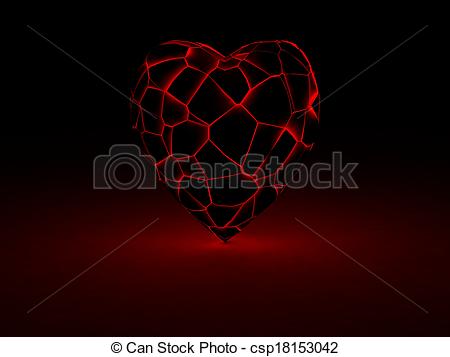Is there a way to make Voronoi cracks glow without having the “shards” also glow? Something like this:

I’m looking to keep the voronoi texture as the displacement texture, but also make the cracks glow.
Is there a way to make Voronoi cracks glow without having the “shards” also glow? Something like this:

I’m looking to keep the voronoi texture as the displacement texture, but also make the cracks glow.
In Cycles, you can set the emission shader to only be visible to camera rays (which means it won’t cause any illumination).
If you need a soft glow, you can add that through the compositor.
I have found no way to control the output of Voronoi such that all cracks are in the very low end and all shards are the very high end. Instead they are overlapping (one crack being around 0.4, and a shard another place also being around 0.4), making output control impossible. So unless I misunderstand the question, I don’t think it’s possible.
Cycles doesn’t currently include a voronoi crackle option - so I don’t think it’s possible using inbuilt textures/shaders (at least I have yet to find a way).
Shame - because such an option would be extremely powerful.
Something like this?
http://www.pasteall.org/pic/show.php?id=91940
Not a texture though but will take less resources compared to displacement imho.
Edit:
You could of course resort to OSL or find how Cycles voronoi is different.
http://www.pasteall.org/blend/37570
Thanks for all the responses. It really does seam like this should be easy. The cracks look black, so I don’t understand why I can’t just use a color ramp between the voronoi and the factor of a mix shader and set it to only affect black. I’m beginning to think that the cracks don’t actually exist. They just look like they do. Does that make sense? I’ll keep playing with it. I feel like the math node could help, but I’m not well versed in how that one works.
I think I might export the texture as a png and look at it in Photoshop. I could run a high pass filter on it or low pass (I get those 2 mixed up) and just create a white and black only texture where the cracks are solid black and the cells are solid white then just add it back to the object as an image texture and hope it lines up with the original. This should work.
Well can’t export a procedural as an image and I’m realizing there are no “black lines” defining the cracks. I think the easiest way to go about what I’m trying to do is to create a seamless voronoi texture in photoshop with 0,0,0 (black) lines defining the cells. What cha think? Sound good?
Hi
You can try something like this …
Use two identical Voronoi textures with cells
Then rotate one with repect to the other, where the variation in angle determines the size of the cracks
Mix these to find the difference
Saturate the result to a simple black/white or factor value
Use this as a mix factor or whatever
It does not give a nice blurred edge, but you could add something for blurriness too
Not perfect but reasonable
Hope this helps
Martin
This is with a 0.1 deg rotation of XYZ
Generally, the way to really get a ‘glowing cracks’ look would be to use the displace modifier for the cracks and make a map for the emission through use of the geometry node’s pointiness parameter (which can also be mapped in a way to apply the shader to concave angles).
You wouldn’t use a texture node at all.
That’s a great solution. You can also use a location offset to achieve a similar result.
I did glowing cracks as Martin Norris said.
I wonder can you add glowing cracks within the texture
When you mix difuse texure and emmision shader, everyting emmits. Is it possible that emmits only on cracks texture?
Excellent! This is exactly what I was trying to accomplish. Such a simple solution too. Wow I’m reading through all the replies and there are some great ones. I’m learning so much. Thanks guys.
@vejn - make mask image in image editor or use Blender’s Color Ramp to get mask for emission and use Light Path node for that.
Thanks again @eppo ! Thanks for the blend file because I can’t see the nodes on image.
How did you made mask image ?
Also in the image what @brent newton posted, I think there is a soft blur effect present.
I think you can add with material index 1 a blur effect in render layer compositor.
It would be nice if Cycles would have blur node in material editor. With emmision node we could get this effect immediately.
Basically, blur node would add blur with particulary this material asssigned.
Mask image- i did use Gimp, Colors - Desaturate (Luminosity), Levels - Adjust, so, that there is only bw islands left. Invert colors.
Same can be achieved in Blender’s nodes by greyscaling crack image and using Color Ramp (basically Color Ramp alone is enough) to squeeze output range - increase contrast.
If you render on CPU, you can use this OSL script: http://www.pasteall.org/62292
Essentially, the difference is that it divides the nearest-cell distance by the second-nearest cell distance, which always makes the output 1 on cell borders.
WOW! That is great. Thanks so much for helping us out.